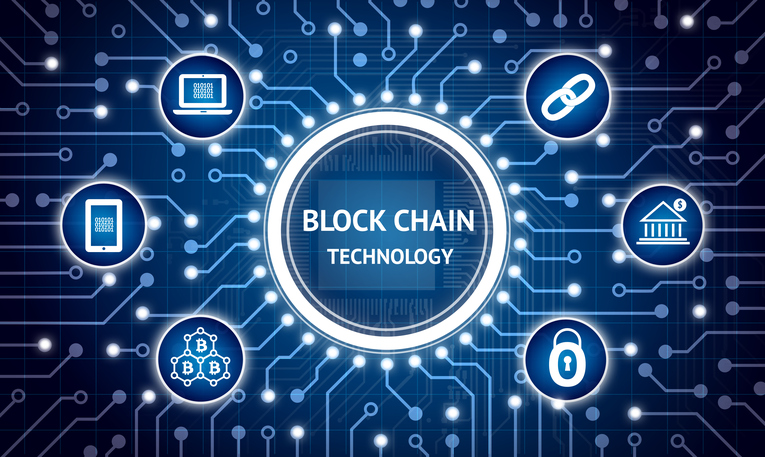
Not a day goes by without another article, conference, LinkedIn post or tweet, praising the revolutionary nature and countless blessings of introducing “blockchain” into the energy sector. And yes, the technology behind the Bitcoin cyber-currency has the potential to fundamentally alter the way energy is being procured and traded. But for all its potential, blockchain is, and always will be, limited to the purely commercial aspect of any energy transaction. To be truly transformative, the $-bits need to be matched by software that links it the other side of the proverbial energy coin: the physical world of electrons.
What blockchain does do is bring the market much closer to the electrons – and thus the economic and physical dimensions of the energy world closer together. Remember that essentially the energy world is split in two. First, it has a physical dimension in which electricity is being generated and distributed through an infrastructure we call the power grid. For electricity to be transported safely, this grid must be kept in balance at all times, which essentially means that power production needs to equal load demand every instance.
Enjoy 12 months of exclusive analysis
- Regular insight and analysis of the industry’s biggest developments
- In-depth interviews with the industry’s leading figures
- Annual digital subscription to the PV Tech Power journal
- Discounts on Solar Media’s portfolio of events, in-person and virtual
Or continue reading this article for free
On the other hand, there is a market – or some other arrangement – by which those that consume power pay for its production and safe transport. Generally, payments are made to a utility. This utility in turn either produces power or procures it – and, depending on where you are in the world, either pays a grid operator or maintains grid stability itself.
Today, the commercial transaction is only very indirectly linked to what happens in the physical world. That’s because electricity is essentially being traded via the great “ocean” that is the grid. Yes, producers feed an agreed amount into that ocean at any given time, typically in hourly intervals, and consumers pay for the amount of energy they use, but it’s impossible to say where the kilowatt-hour (kWh) of power that just kept your lights on really came from. Most likely it just comes from the closest power plant. Blockchain changes that – to a degree.
The ABCs of blockchain
What is blockchain? Well, it’s basically a continuously growing list of records, or “blocks“, which are linked and secured using cryptography. Each block typically contains a link to a previous block, atimestamp and transaction data. That makes blockchains inherently resistant to modification of the data.
A blockchain can serve as “an open, distributed ledger that can record transactions between two parties efficiently and in a verifiable and permanent way” according to the Wikipedia definition.
“For use as a distributed ledger, a blockchain is typically managed by a peer-to-peer network collectively adhering to a protocol for validating new blocks. Once recorded, the data in any given block cannot be altered retroactively without the alteration of all subsequent blocks, which requires collusion of the network majority.”
Blockchain became famous as the technology behind the Bitcoin digital currency. But its decentralised nature, fault tolerance and security also make it suitable for many other applications, ranging from identity management to food traceability.
Energy trading is a great fit too. Blockchain allows for the creation of an automated trading platform that links producers and consumers in real time and lets them engage – via “smart contracts” – in a (quasi-) direct transaction. The electrons thus sold still don’t go straight to the buyer, but both parties know that at the (exact) time in question, one party is producing just the amount of energy that the other party needs.
Provided both parties are also physically close (which is a big if), this transaction has relatively little impact on the grid. As almost all contributions on the subject point out, blockchain has the potential to make a utility redundant by enabling consumers and (independent) producers or prosumers to trade directly without any intermediary.
While it’s hard to argue with that, sceptics try to temper the hype around blockchain by pointing to (i) the volume of data storage required, (ii) the correspondingly huge requirement for energy that would be needed, as well as (iii) the absence of any industrial standards. There’s also the ubiquitous complaint that “the current legal and regulatory framework in no way matches the requirements of a decentralised energy grid”.
And, indeed, at present the energy aspect of blockchain is, unfortunately, a reality. To be disruptive, blockchain will have to become a lot leaner: right now a single transaction “costs” the equivalent of a full charge of an electric vehicle.
Obviously, “paying” in energy the equivalent of a full Tesla charge is not sustainable.
But the good news is that there are many promising avenues to significantly reduce the energy cost of using blockchain in grid transactions. It’s much easier to limit and validate participants, for instance. Given sufficient interest, it seems certain that blockchain will scale – just as emails did – even though there were many that warned sending an email would prove to be much costlier than sending a fax.
This piece was originally published in the pages of ‘Storage & Smart Power’, a dedicated section in the global downstream technology journal PV Tech Power, presented each quarter by Energy-Storage.News. Read Part 2 of this article here, with a case study on blockchain technology in real-world conditions by Sonnen to follow on the site.
